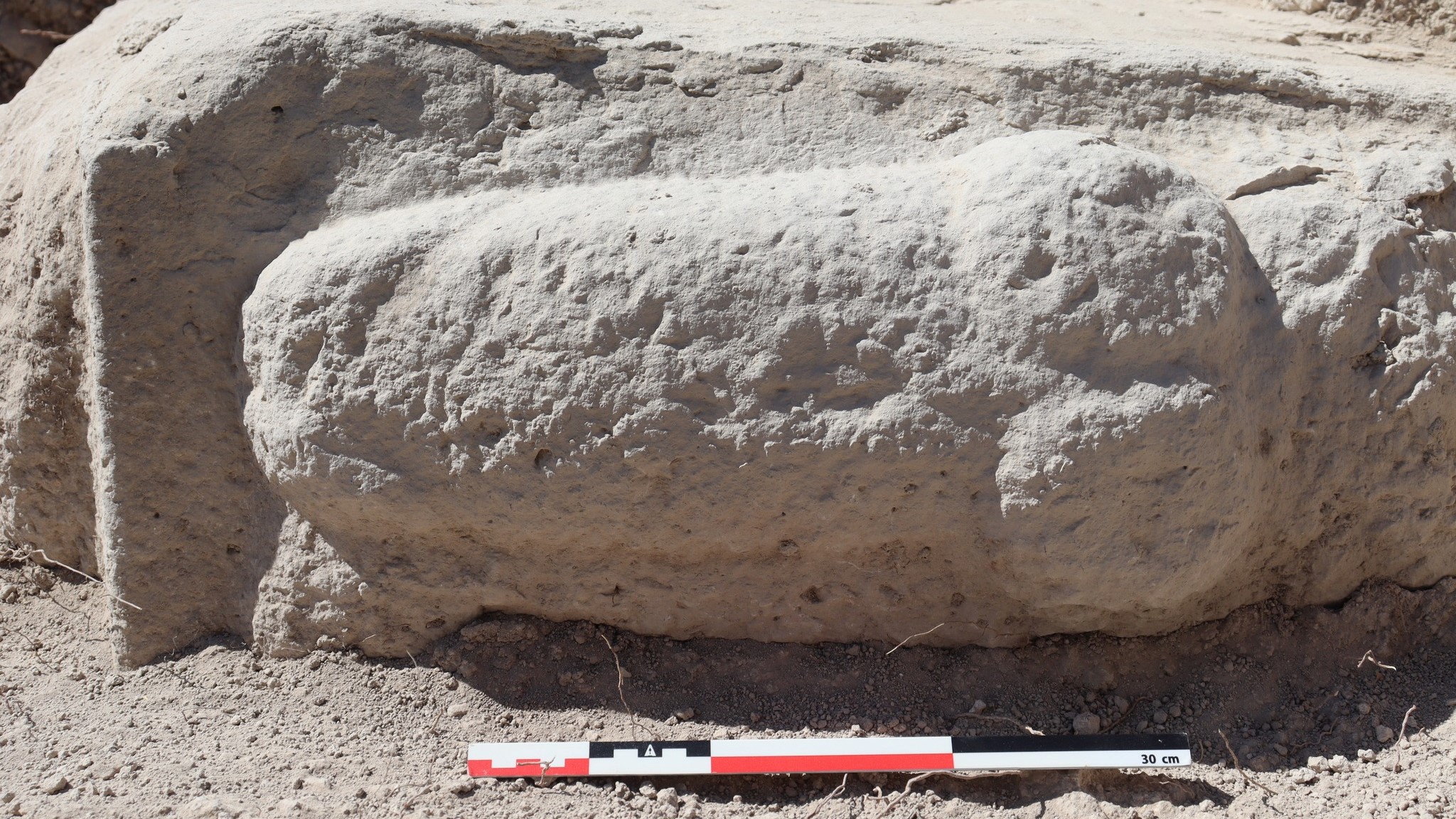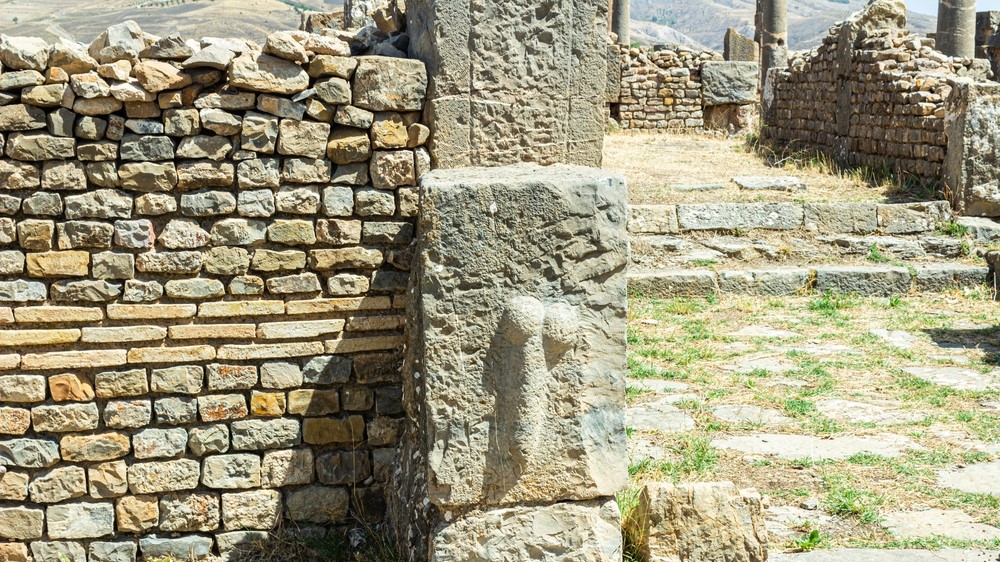Ancient Roman penis sculpture could be the largest of its kind ever discovered
Researchers described the stone phallus as "unusually large."

A girthy stone penis sculpture recently uncovered at an ancient Roman site in Spain measures about 18 inches (46 centimeters) long, which could make it the largest Roman phallus carving ever discovered. The chiseled genitals may have been carved and displayed to ward off bad luck, according to experts.
Archaeologists uncovered the lengthy sculpted shaft at El Higuerón, a site near the town of Nueva Carteya in the Córdoba region of Spain. The Historical Museum of Nueva Carteya, which is leading the excavation of the site, shared the find in an Aug. 19 Facebook post.
El Higuerón dates to the fourth century B.C. and was originally an Iberian settlement before it was overtaken and built upon by the Romans, who conquered the region in 206 B.C. Researchers suspect that the eye-catching penis artwork was carved into a stone that was once proudly displayed at the base of a tower built by the Romans.
Phalli were an important symbol in ancient Roman culture; they were often used to ward off bad luck or to help improve virility. As a result, phallus carvings are commonly found at ancient Roman sites. However, the newly uncovered phallus has raised eyebrows among researchers due to its above-average size.
"This one is unusually large," Andrés Roldán Díaz, an archaeologist at the University of Extremadura in Spain and director of the Historical Museum of Nueva Carteya, told Spanish news outlet El País. "We are currently researching whether one of similar dimensions has been previously found." However, this could be the largest Roman phallus ever found, according to El País.
Related: 7 Roman inventions: Incredible feats of ancient technology
Phalli are believed to have been important to the Romans because of their supposed ability to ward off the Evil Eye, an ancient embodiment of bad luck that is often depicted as a large unblinking eye. As a result, phalli were often carved on the exteriors of buildings and around windows and doors, and even appeared as a design motif in public meeting places, Adam Parker, a doctoral candidate at The Open University in the United Kingdom who studies Roman phalli, wrote for The Conversation on June 13.
Sign up for the Live Science daily newsletter now
Get the world’s most fascinating discoveries delivered straight to your inbox.
"In the Roman psyche, these spaces were particularly at risk from supernatural dangers because meeting and crossing places are where people naturally interacted," Parker wrote. "The malignant forces of the Evil Eye were thought to be particularly powerful there."

In addition, phalli were often worn as pendants or jewelry in an attempt to improve virility and fertility. In June, metal detectorists in the U.K. uncovered a silver penis pendant, which is a particularly valuable example of these erotic amulets, and it likely had an affluent owner.
It is unclear exactly how many phallus carvings have been discovered to date in regions that were once colonized by the Roman Empire, but at least 92 examples of carved genitals have been unearthed in the U.K. alone, according to The Conversation. Objects in this collection range from a simple phallus carved into a millstone to a winged penis made out of animal bone.
However, these phallic images were not always created with beneficial intentions. In May, researchers at a Roman fort near Hadrian's Wall in the U.K. unearthed a stone slab adorned with penis graffiti paired with an explicit insult, thought to have been etched by soldiers to shame a fellow brother-in-arms.
The El Higuerón carving is not the only noteworthy find to be uncovered there. Researchers previously found that Roman fortifications at the site — the phallus-bearing tower and 6-foot-thick (1.8 meters) perimeter wall — were built on top of existing Iberian buildings, which is unusual, according to El País.
This unorthodox building activity at El Higuerón, combined with the potentially record-breaking phallus, highlights "a much more complex history than one would expect from these archaeological sites," Díaz told El País.
Originally published on Live Science.

Harry is a U.K.-based senior staff writer at Live Science. He studied marine biology at the University of Exeter before training to become a journalist. He covers a wide range of topics including space exploration, planetary science, space weather, climate change, animal behavior and paleontology. His recent work on the solar maximum won "best space submission" at the 2024 Aerospace Media Awards and was shortlisted in the "top scoop" category at the NCTJ Awards for Excellence in 2023. He also writes Live Science's weekly Earth from space series.










